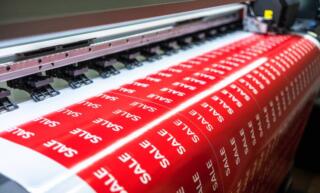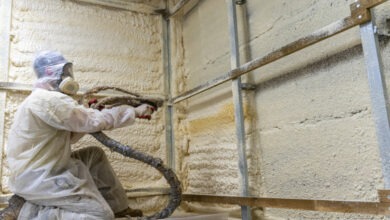
Tips for Optimal Wide-Format Printing Quality
Maintaining a strong marketing presence is a challenge, especially for smaller companies. Still, with the right marketing approach, even the smallest business can stand out and battle with the bigger companies. Local advertising is a place where small businesses especially hold their own, and wide-format printing is one of the best ways to do so.
Wide-format printing offers an incredible opportunity to make your brand shine, whether you’re decorating your storefront, promoting an event, or creating eye-catching advertisements. But achieving professional results involves more than just hitting “print.” Here are a few expert tips for optimal wide-format printing quality.
What Is Wide-Format Printing?
As the name suggests, wide-format printing is about turning out larger printed pieces, up to 100 inches in width or more. That means banners, posters, displays, signage, murals, and other bigger and better means of advertising.
Define Your Project’s Specifications
Unless you already possess design and layout skills, enlist the services of a designer and printer for your projects. There are a few things to discuss with them and keep in mind as you explain what you’re looking for.
Begin by determining the dimensions and materials for your project. Wide-format printers can handle impressive sizes, but it’s essential to decide on the right dimensions for the space and purpose. Much goes into preparing a wide-format printing project, so be prepared to invest some time and thought into the process.
Choose the Right Material
As you can imagine, different media serve different functions. Some are stronger and more durable for harsh environments, while others are better for communicating colors and text. Here are several substrates that suit different purposes:
- Vinyl is ideal for outdoor signage and banners due to its weather resistance. Think outside signage and banners.
- Paper is best for indoor signs that don’t need protection from the elements. This will keep costs down as well.
- Fabric is great for trade shows and backdrops that require a touch of texture and elegance.
Perfect Your Design
Utilize professional design software like Adobe Illustrator or Photoshop to craft your visuals. Ensure images are high resolution (at least 300 DPI) to prevent pixelation (meaning the image becomes broken up into little squares, which looks terrible). Opt for vector graphics whenever possible, as they maintain quality when scaled.
Moreover, always design in CMYK color mode to match print output accurately. Otherwise, the colors you see on the screen won’t match the colors on the printed piece.
Finally, ensure the file is in the correct format before shipping it off. PDFs are widely accepted, but EPS and TIFF files are best for vector and high-resolution images, respectively.
Proof Your Prints
Before you send the files to the printer, do a proof, and then have someone else do another one. Check for typos, color consistency, and image clarity. When you do send it to the printer, request a test proof and look things over once more, then have a colleague review it to catch any remaining errors. Reprints can make you go over budget, so get things right the first time!
Those are just a few tips for optimal wide-format printing quality. Follow these steps to create stunning wide-format prints that elevate your business presence. And don’t hesitate to ask your printer for other tips and tricks to help your advertisements look their best.






